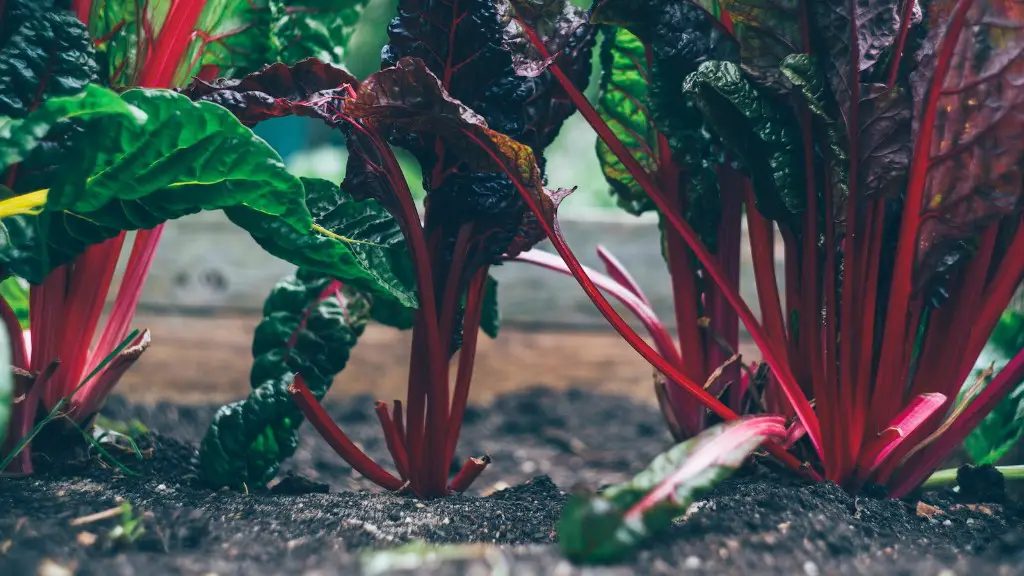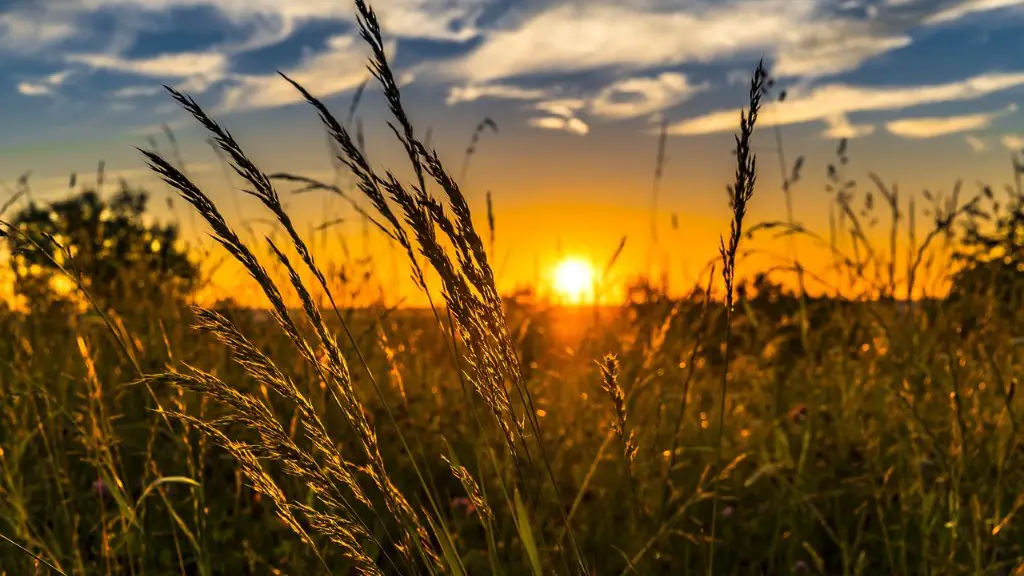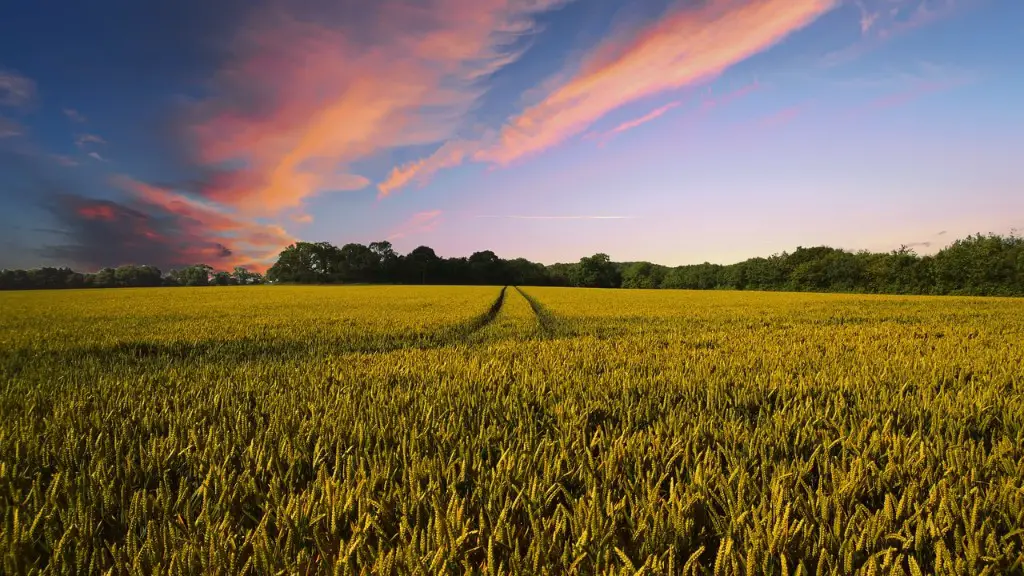Climate change has been a hot topic in the news lately. While there are many factors that contribute to climate change, agriculture is one that is often overlooked. Agriculture contributes to climate change in a number of ways. For example, livestock release methane gas, which is a greenhouse gas that trap heat in the atmosphere and contribute to the rising temperatures that we are seeing around the world. In addition, the process of clearing land for agriculture can release carbon dioxide into the atmosphere. Trees and other vegetation help to absorb carbon dioxide, so when they are removed, there is less to help offset the emissions from agricultural practices.
Agriculture affects climate change in a number of ways. First, agriculture is a major source of greenhouse gas emissions, accounting for about 10% of global emissions. Second, agriculture can contribute to climate change by way of land-use change – for example, the conversion of forestland to cropland. This conversion can cause a release of carbon dioxide into the atmosphere and also alters the land’s ability to reflect sunlight, which can contribute to warming. Third, agriculture can be impacted by climate change – for example, crops may be damaged by extreme weather events or by changes in temperature and precipitation patterns. Finally, agriculture can play a role in mitigating climate change, for example, through practices such as Conservation Farming.
Is agriculture the main cause of climate change?
Agricultural emissions, particularly of methane and nitrous oxide, contribute significantly to global warming. Reducing these emissions could play a significant role in climate change mitigation. Agricultural practices can be changed to reduce emissions, and new technologies can be employed to further reduce emissions.
We need to find a way to feed the planet without causing so much damage to the environment. Clearing land to farm and the farming itself is responsible for a huge percentage of greenhouse gas emissions. We need to find a way to reduce those emissions without compromising the food supply.
How does agriculture affect the environment
Agriculture is one of the leading sources of pollution in many countries. Pesticides, fertilizers and other toxic farm chemicals can poison fresh water, marine ecosystems, air and soil. They also can remain in the environment for generations.
There are a few things to consider when thinking about large-scale, conventional farming. First, this type of farming focuses on intensive single crop production. This means that a lot of effort is put into growing one type of crop, often to the exclusion of others. Additionally, mechanization is often used in large-scale, conventional farming. This means that machines are used to help with various tasks, such as planting and harvesting. Finally, this type of farming often depends on fossil fuels, pesticides, antibiotics, and synthetic fertilizers. While this system can yield high production levels, it also has some drawbacks. For example, it can contribute to climate change, pollute air and water, and deplete soil fertility.
Is agriculture the biggest polluter?
It’s possible because agricultural production is a leading source of water pollution. The main sources of water pollution from agriculture are animal wastes, crop production, and fertilizer and pesticide use. Animal wastes can contaminate water with bacteria, viruses, and nutrients. Crop production can contaminate water with chemicals from herbicides, pesticides, and fertilizers. Fertilizer and pesticide use can also contaminate water with chemicals.
Fossil fuels are a huge problem when it comes to climate change. They account for over 75% of global greenhouse gas emissions, and nearly 90% of all carbon dioxide emissions. This is a huge problem that needs to be addressed, and soon. We need to find alternative sources of energy, and fast.
How much does farming add to global warming?
Farming is a major contributor to climate change, accounting for 10% of emissions in the United States each year. Land conversion, the use of synthetic fertilizer, diesel-powered farm machinery, and methane-emitting livestock all contribute to the problem. With the world’s population expected to continue to grow, the demand for food is only going to increase, putting even more pressure on our already strained resources. We need to find more sustainable ways to produce food if we want to protect our planet.
The health of farmers and others who come in contact with air, water, and soils polluted by chemical fertilizers and pesticides may be negatively affected. These practices can degrade components of the ecosystem, affecting the health of plants and animals within the ecosystem.
What is the relationship between climate and agriculture
Climate change has a significant effect on agriculture. Higher temperatures can lead to increased evaporation and water stress, which can impact crop yields. Extreme weather events, such as floods and droughts, can also lead to soil erosion and other damage to crops. In addition, changes in atmospheric carbon dioxide can affect the nutritional quality of some plants.
Agriculture can have a significant impact on the environment. Five of the most significant environmental effects of agriculture are soil fertility loss, eutrophication of water bodies, deforestation, climate change and pesticide pollution.
Soil fertility loss can occur when crops are grown in the same location year after year without allowing the soil to recover. This can lead to a decline in crop yields and eventually to soil degradation.
Eutrophication of water bodies can occur when agricultural runoff carrying nutrients such as nitrogen and phosphorus enters rivers, lakes and estuaries. These nutrients can lead to the overgrowth of algae and aquatic plants, which can deplete the oxygen in the water and create serious problems for fish and other aquatic creatures.
Deforestation can result from the conversion of forestland to agricultural land. This can lead to soil erosion, loss of biodiversity and climate change.
Agriculture can contribute to climate change both through emissions of greenhouse gases and through land-use change. For example, the conversion of forestland to agricultural land results in a loss of trees, which can no longer act as a “sink” for carbon dioxide.
Pesticide pollution can occur when pesticides used in agriculture runoff into surface water or le
What are 3 problems of agriculture?
In order to properly address the triple challenge of feeding a growing population, providing a livelihood for farmers, and protecting the environment, we must set the table for success by taking a holistic and coordinated approach. This means considering all three challenges simultaneously and devising strategies that address them in an integrated way. Only by doing so will we be able to make sustainable progress in each area.
Our food system is responsible for a large portion of greenhouse gas emissions. This is because food needs to be grown and processed, transported, distributed, prepared, consumed, and sometimes disposed of. Each of these steps creates greenhouse gases that trap the sun’s heat and contribute to climate change. We can reduce our impact on the environment by making changes at each stage of the food system.
Why is agriculture the biggest mistake
Farming allowed for the rise of civilizations, and with it, deep class divisions. Those who controlled the food supply had power over those who did not, and this led to the development of classes and caste systems. Hunter-gatherers, on the other hand, had little or no stored food, and no concentrated food sources, like an orchard or a herd of cows. They lived off the wild plants and animals they obtained each day, and as a result, were less likely to develop deep class divisions.
This Uganda company is creating ways for change byBananas are the world’s most wasted crop, butproving that there is a market for Ugandan bananas that are ethically and sustainably produced. The company is called Fresh Healthy Foods, and they are working to educate both retailers and consumers about the benefits of buying Ugandan bananas. In addition to creating a market for Ugandan bananas, Fresh Healthy Foods is also working to create jobs and improve the livelihoods of smallholder farmers.
What is the number 1 polluter?
The energy industry is responsible for a significant amount of pollution, due largely to its reliance on coal, oil, and gas. While there have been some efforts to address this issue, much more needs to be done in order to reduce the environmental impact of the energy sector.
Climate change is caused by a variety of factors, including heat-trapping greenhouse gases, changes in the Earth’s orbit and rotation, variations in solar activity, and changes in the Earth’s reflectivity. Volcanic activity can also influence climate change.
Warp Up
Agriculture can contribute to climate change in a number of ways. For example, agricultural production accounts for a significant share of global greenhouse gas emissions, including through enteric fermentation by livestock, soil emissions of nitrous oxide, and the use of agricultural chemicals and machinery. Furthermore, land-use change associated with agriculture—including deforestation, forest management practices, crop production, and the conversion of wetlands to cropland—can result in emissions of greenhouse gases or changes in the amount of carbon dioxide, water vapor, or other atmospheric constituents that can affect the climate.
The greenhouse gases produced by agriculture are a major contributor to climate change. Agriculture affects climate change in two ways: through direct emissions of greenhouse gases and through land-use change. Land-use change includes activities like deforestation, which results in the release of carbon dioxide from the trees that are cut down.




